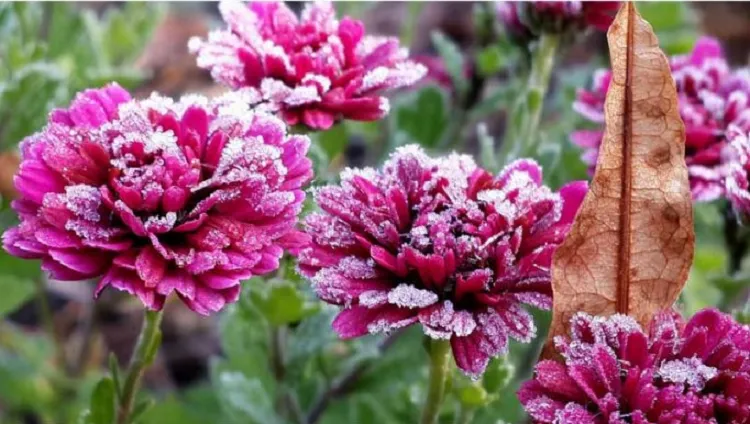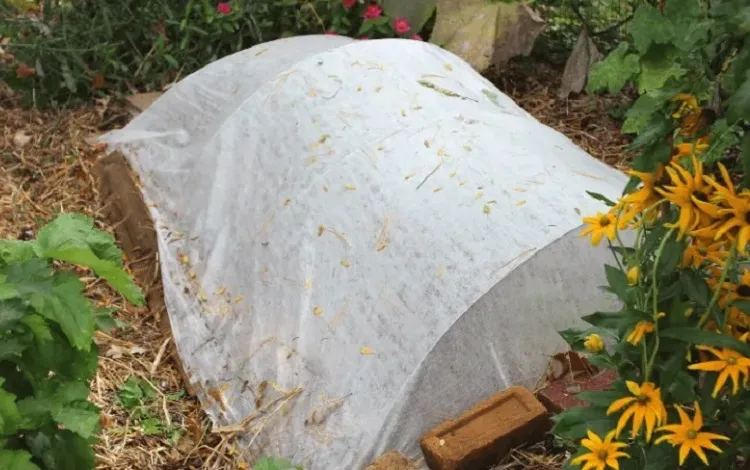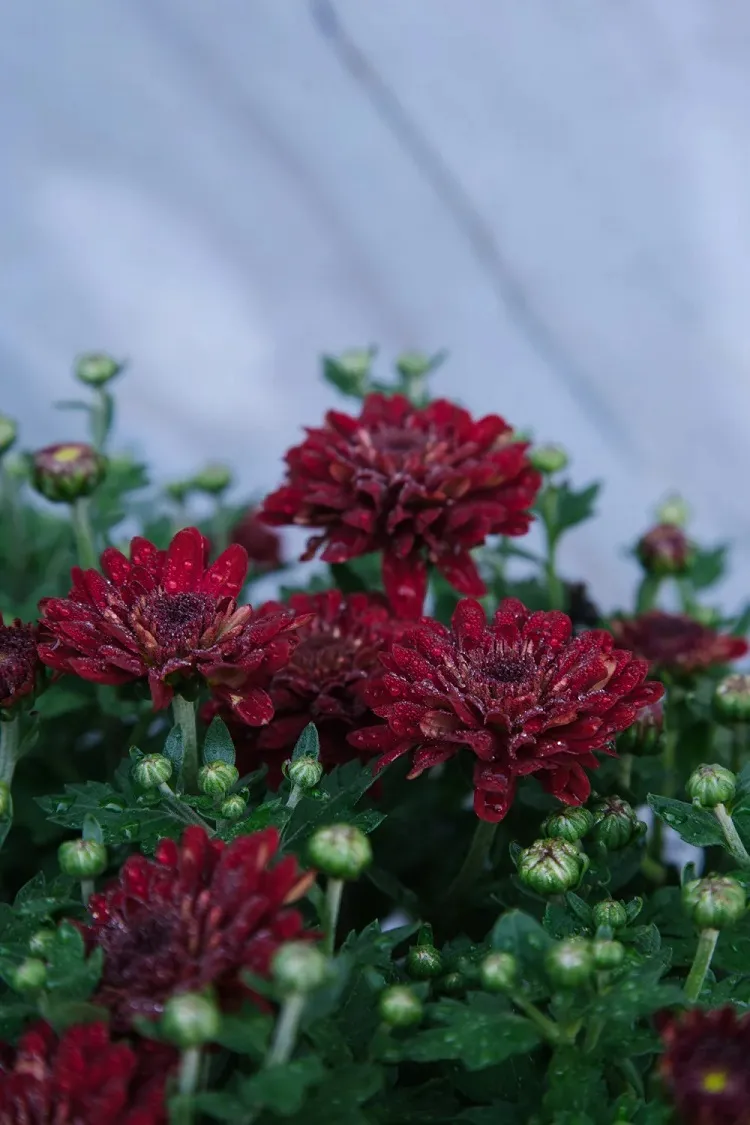While the orange, yellow and deep red dyes of autumn paint the landscape, one of the most cherished symbols of the season flourishes, the chrysanthemum, or so-called “mum”. These hardy, late-blooming flowers bring a burst of life and warmth to gardens and yards just when the days are growing shorter and colder. However, these plants are not well defended against the threat of being frozen. Let’s explore the vital issue, how to protect mums from frost?
Can Mums Survive Frost, Left Alone?
Mums can experience a light frost and bear it, if they are established well, and have had time to accustom to the low temperatures. Chrysanthemums are perennials in many regions and naturally get ready themselves for frost weather. However, the extent to which they can withstand it largely depends on various factors like the plant’s age, its variety, and the harshness of the frost. Young flowers, mainly those planted late in the autumn, are more vulnerable to frost injury. On the other hand, given varieties may be hardier than others. Garden chrysanthemums, for instance, are often more cold-resistant than the ones, bred for developing showy blooms.
Do I Need to Protect Mums from Frost?
It isn’t always required to defend your chrysanthemums from frost, but its prevention worth considering, especially if you want your flowers to flourish and return year after year. There are a few grounds why it’s a good idea to protect mums from frost. First of all, in that way you ensure their prolonged flowering. Chrysanthemums, which survive frost with minimal injury, will go on blooming actively into the fall, extending their show of beauty and bringing enjoyment to your green area. Then, if you live in a zone where these flowers are perennial, sheltering them from frost assures their rebirth the next growing season, and there is no need to replant them every year. Also, frost damage can stress your chrysanthemums, making them more vulnerable to diseases and pests. Protecting them lowers this stress and maintains the plants healthier. So, when frost is expected, cover them with a breathable fabric like burlap or a frost cloth, which can provide insulation.
Can You Revive Fall Mums?
Sometimes, although you do your best to care, chrysanthemums may still suffer from frost injury. So, in case you notice browning, wilting, or limp plant parts after a frosty night, don’t think your flowers are not alive. There’s a reason for hope that you’ll revive fall mums. How to do this?:
- Pruning injured parts: Trim away the injured stems of the mum. Ensure you use sharp scissors or pruning shears to make clear-cuts.
- Deep watering: The flowers may become dehydrated after frost, so water them deeply, though avoid overwatering. Suitable hydration helps them recover.
- Dozed fertilizing: Add a balanced, slow-release fertilizer to enrich soil with essential nutrients, which aid in recovery. Follow the recommended amounts on the fertilizer label.
- Thick mulching: A good layer of mulch around the base of the chrysanthemums will help to insulate the roots and protect them from further injury. The appropriate mulch consists of straw or shredded leaves.
- Sheltered environment: Cover them with a blanket, or if it’s possible, bring potted flowers indoors or to another sheltered spot during the coldest nights to stop further frost damage.
Read also: When & How to Prune Chrysanthemums in Ground & in Pots?
How Do You Overwinter Potted Mums?
Overwintering potted chrysanthemums may seem a bit more unusual from caring for those in the ground, but it can be done all right with proper knowledge and attention. There are some useful steps to help you protect mums from frost, when they are grown in containers:
- Select a pot that fits: Start with a well-draining pot that’s at least 12 in (30.5 cm) deep and wide enough to accommodate the mum’s root system.
- Trim and deadhead: Before the first frost, trim your flowers to about 6 in (15 cm) above the soil level. Cut off any dead or yellowing leaves and spent blooms.
- Insulate the container: When the plants are already dormant, move the potted chrysanthemums to a cool, dark, and sheltered location, like an unheated garage or shed. Maintain the soil slightly moist, while not waterlogged.
- Maintain temperature: Monitor the temperature to be sure it doesn’t drop too low. Ideally, the degrees should stay between 32°F and 50°F (0°C to 10°C).
- Sunlight intensity: Chrysanthemums need some light during their dormant phase. Ensure they receive a little indirect sunlight, so place them next to a window – conditions that will not allow excessive stretching of their stems.
- Protect mums from frost: In early spring, when the weather warms up, reintroduce the potted flower step by step to outdoor conditions. Move it to a sheltered spot with partial sunlight for a 3-4 a day, increasing the exposure time little by little.
Read also: Frost Resistant Flowers: Keep a Blooming Oasis in Fall? Soften the Effect of Freezing Weather!




